Data disk migration is the process of transferring data from one storage device to another. This can involve moving data between physical devices, virtual machines, or even transitioning from on-premises solutions to cloud-based platforms. The ultimate goal of data disk migration is a seamless transition without compromising data integrity, security, or accessibility. In this blog post, we walk through how to use Migrate to Virtual Machines, which is built into Google Cloud’s Migration Center, for a fast, easy way to successfully migrate data disks to Google Cloud.
Why data disk migration matters
1. Upgrade to a newer OS: An unsupported operating system poses a significant threat due to the lack of official updates, security patches, and technical support. This leaves the system vulnerable to cyber threats, compatibility issues, and regulatory non-compliance, while also hindering innovation and functionality.
Disk migration involves transferring data from the outdated, unsupported operating system to a newer and supported one.
2. Modernization: As technology advances, older storage devices can become bottlenecks, limiting performance and capacity. Data disk migration enables you to take advantage of newer, more efficient hardware.
3. Data protection: Aging storage devices are more susceptible to failures and data loss. Migrating data to newer platforms helps mitigate these risks and ensures its safety.
4. Performance enhancement: Newer storage technologies often come with improved read and write speeds, leading to enhanced system performance and reduced access times for applications.
5. Scalability: Data disk migration facilitates the scalability of your storage infrastructure, allowing you to accommodate growing data demands without compromising efficiency.
Google Cloud Disk Migration
Google Cloud ease the burden of disk migrations with the integration of Migrate to Virtual Machines directly within Migration Center. This robust and effective remedy for disk migration leverages the capabilities of cloud migration technology to seamlessly migrate OS disks or data disks, irrespective of their compatibility with the cloud environment. This is the ultimate solution when you’re facing the challenge of updating your operating system or giving your hardware a boost.
Continuing Google Cloud’s penchant for flexibility and openness, Migrate to Virtual Machines connects with/to a growing number of migration sources, including VMware and other cloud service providers. For instance, consider a scenario where you manage an extensive array of virtual machines, some of which run on old-school Linux distributions or ancient Windows versions (such as W2003, W2008, W2012). Here’s where we see the magic of the disk migration feature of Migrate to Virtual Machines comes into play. You can selectively migrate the source workload disks and subsequently attach them to a supported operating system, effectively modernizing your workload infrastructure.
How it works
Here are the stages in the disk migration process:
First, you need to onboard the VM whose disks you want to migrate.
In the following example we have a VM which is hosted on a local VMware Datacenter; we select it and onboard it to the GCP Migration service:
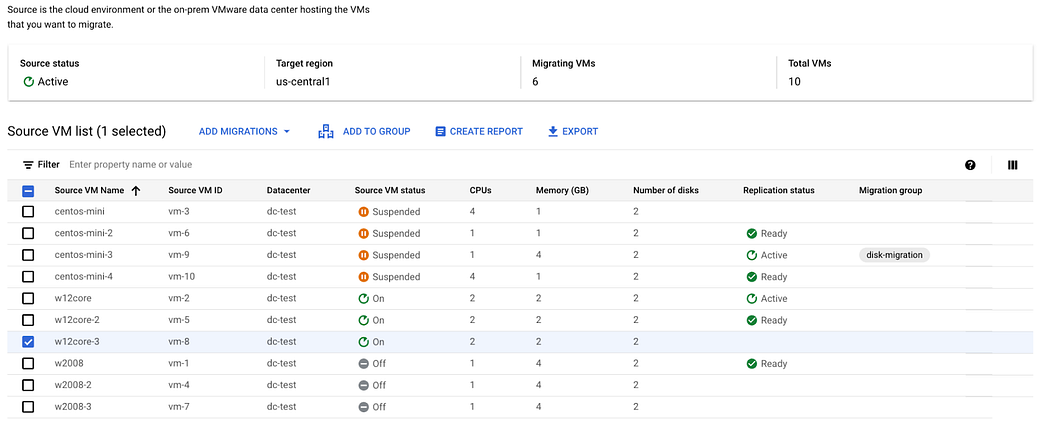
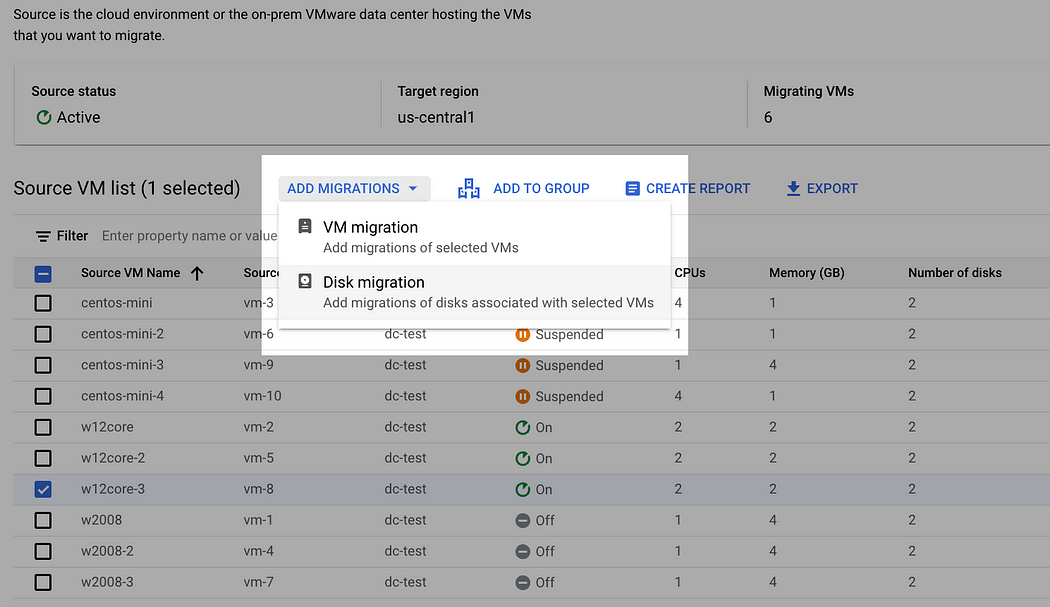
Then, we can start to replicate it:
Once the VM is onboarded to the Migration service we can immediately start to replicate data from the disks of the source VM to Persistent Disk volumes that are on Google Cloud. The data replication is a continuous process that takes place in the background until the final cutover, or you delete the migration.
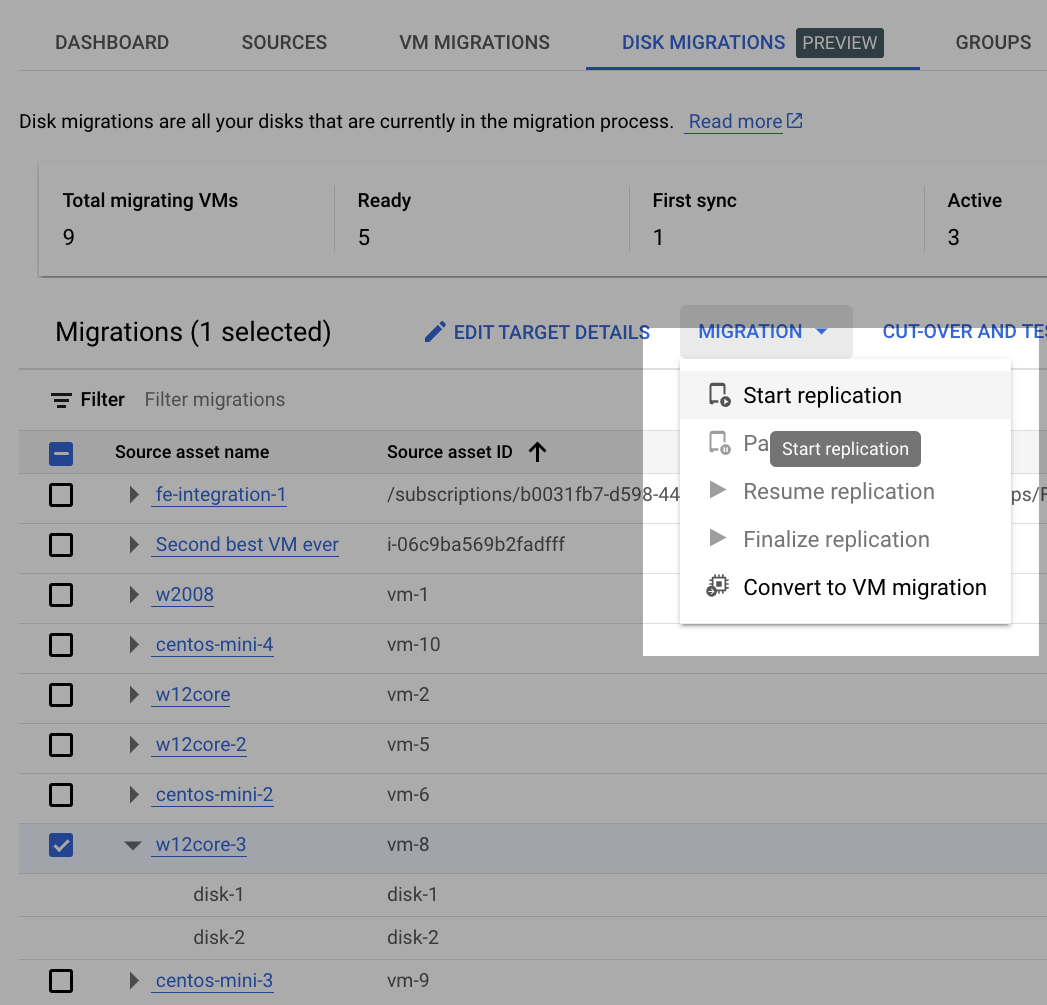
You can also leverage Monitoring:

For additional information, you can click on the VM and access a detailed view of the disk replication status, the estimated time-to-completion, and other related details about the disk migration.
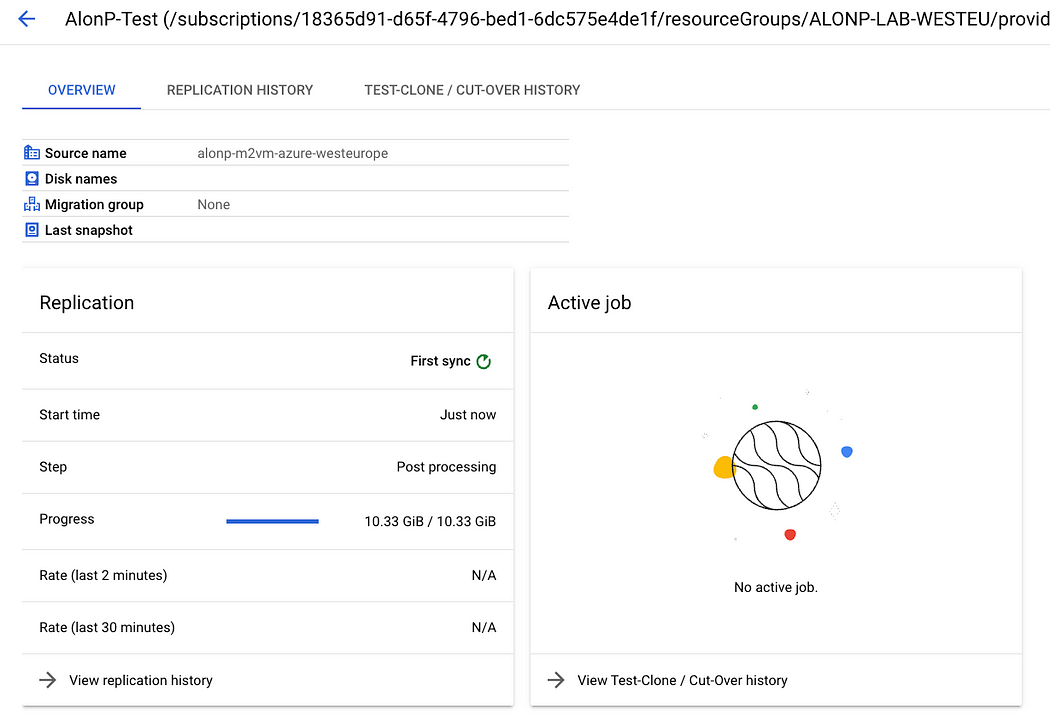
While the replication is on-going, you can already go ahead and set the disk’s target details: Configure settings for the migrated disk, such as the Hosting project (Region and Zone), the disk type, and more.
This will allow saving time and ensure that there’s no rush as the cut-over date approaches.
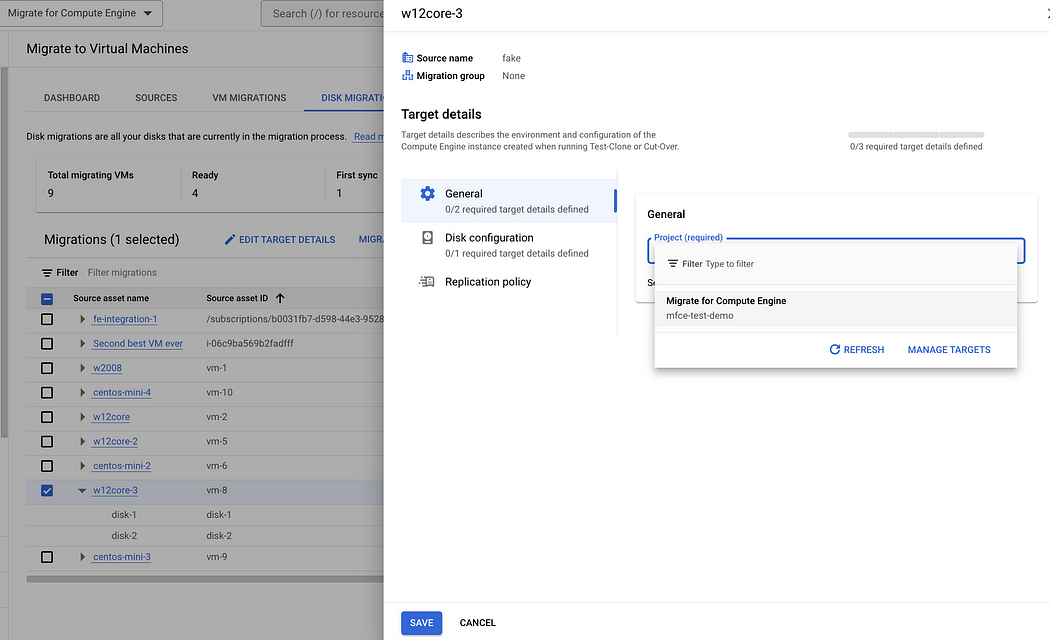
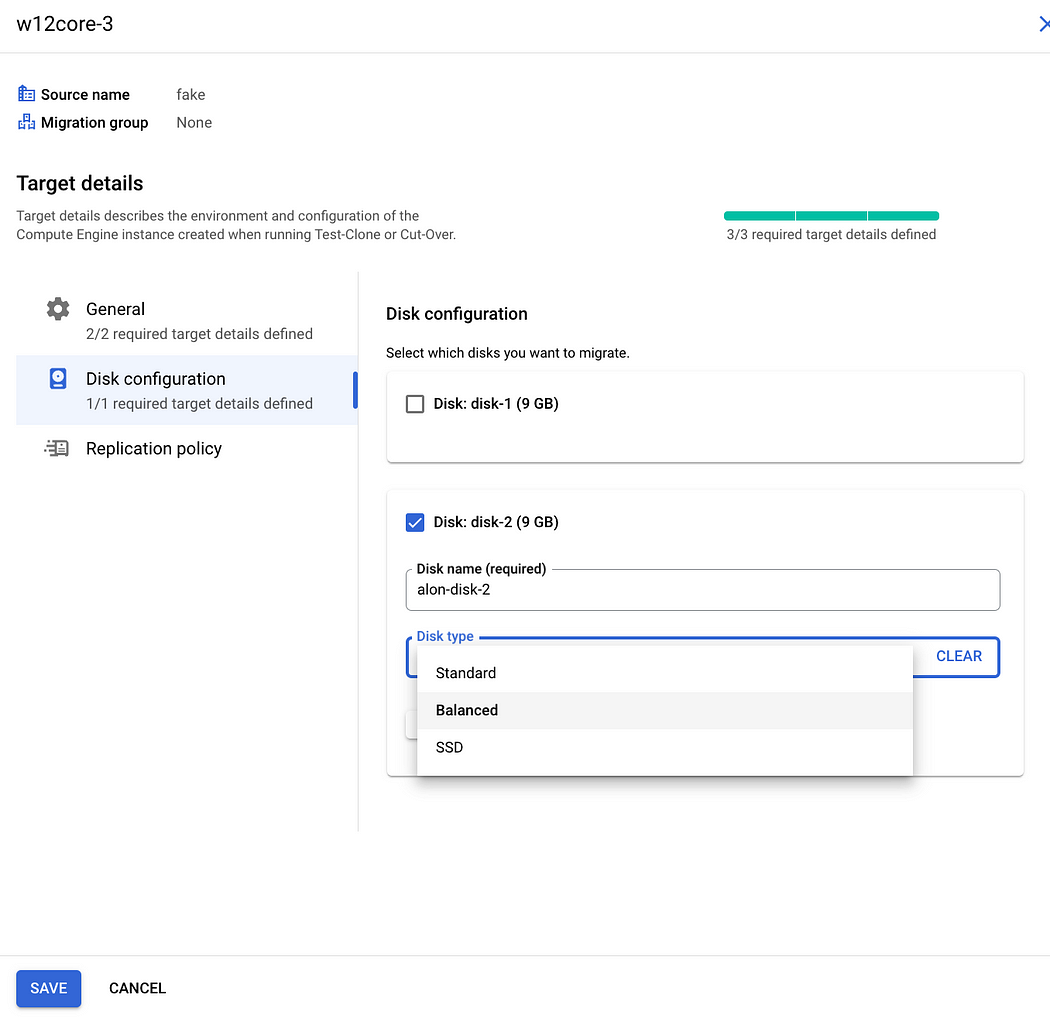
The replication cycles can also be adjusted to synchronize with the cumulative data peak of incremental changes.
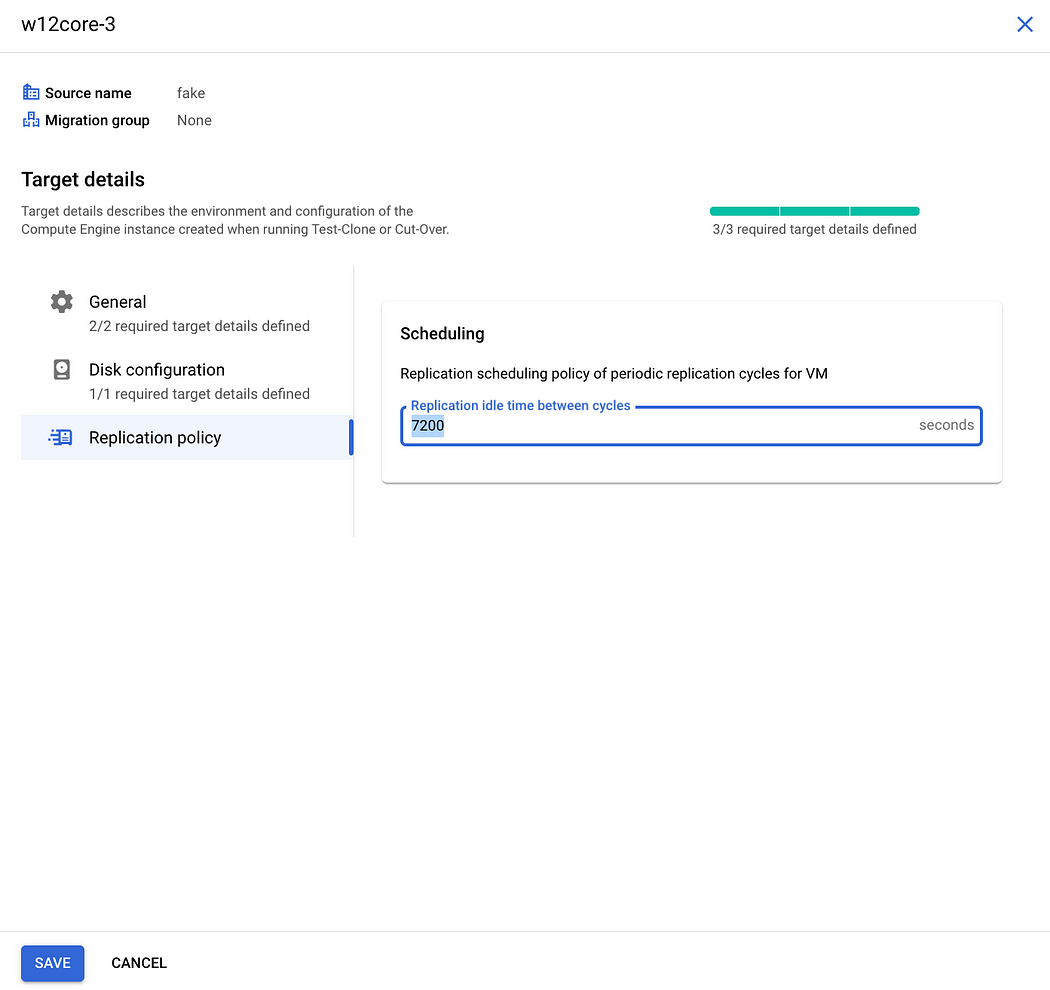
Summary
The Migrate to Virtual Machines disk migration feature brings in a fresh capability that lets you smoothly migrate compute disks from any source VM to Google Cloud disk storage. This functionality taps into the seamless, agentless migration feature of Migrate to Virtual Machines, which means there’s no disruption to the source workload, and it comes with perks like regular replication cycles and a quick cut-over time.
This capability expands migration precision to individual disks, leading to innovative uses like easily shifting workloads to a different operating system or transferring entire data stores to a new platform.
Ready to dive in? Head over to Migration Center to start exploring Google Cloud’s centralized, end-to-end hub for migration and modernization, which includes Migrate to Virtual Machines. Not quite there yet? Check out this 3-minute video on Migration Center, or sign up for a free IT discovery and assessment with Google Cloud, so you can figure out exactly what your IT landscape looks like and how you can migrate it successfully!

